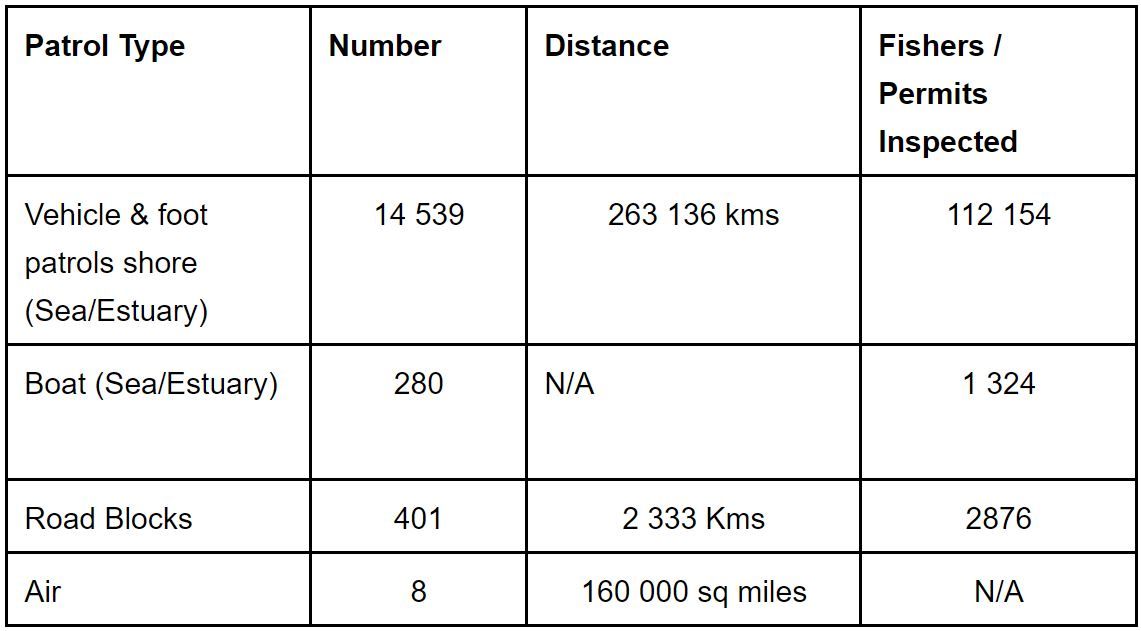Management
The sustainable use of natural resources in KwaZulu-Natal has grown exponentially in the past forty years and now generates both substantial income and a significant number of jobs. This ranges from non-comsumptive use such as photography, hiking and wilderness trails to the consumptive use of plant and animal resources for, among other things, hunting, the capture and sale of live game, to the production of curios and traditional medicines.
In support of the use of natural resources, Ezemvelo KZN Wildlife has produced a series of technical manuals to help private and commercial landowners to manage their land and its resources to maximise the benefits to both biodiversity and sustainability.
- ANTELOPE ABUNDANCE
- HABITAT PREFERENCE OF GAME MAMMALS
- BLESBOK MANAGEMENT
- COMMON REEDBUCK MANAGEMENT
- IMPALA MANAGEMENT
- ORIBI MANAGEMENT
- BLACKBACKED JACKAL
- CARACAL
- BUSHBUCK MANAGEMENT
- MANAGING FOR OTTERS
- GUINEA FOWL MANAGEMENT
- ALIEN PLANT THREATS
- CONSTRUCTING DAMS FOR WATERFOWL
- CREATING A BIRD GARDEN
- WILDLIFE CONSERVANCIES
- FOREST AND BUSH RESTORATION
- REPLANTING A DEGRADED WATERCOURSE
- GRASS CARP FOR WEED CONTROL
- WARM WATER FISH PRODUCTION
- ORIBI CONSERVATION PLAN - LANDOWNERS EDITION - MARCH 07
Coastal Management
The sea is often thought of as vast, wild, unlimited, unmanageable and people feel that it can look after itself. The idea that marine resources will maintain themselves sufficiently for our future needs, while subjected to increasing exploitation has no basis except in WISHFUL THINKING.
Collapsing fish stocks and the disappearance of fish that were once commonly caught is testament to this fact, it is therefore crucial that our marine resources be managed if we are to ensure their long term survival and sustainable utilization.
The Kwa Zulu-Natal Nature Conservation Service (EKZN Wildlife) perform this management function within the Province of Kwa Zulu Natal, through a contractual agreement between EKZN Wildlife and Marine & Coastal Management.
These functions are undertaken on an annual basis, and involves performing the following:
- Marine Compliance by implementing the Marine Living Resources Act (MLRA)
- Marine Awareness by providing information to users on management of the countries marine resources and the laws to ensure sustainable use.
- Liaison, with various sectors to ensure co-management structures are in place to facilitate management of the marine resources.
- Administering all the functions to ensure they are done within the legal and policy framework set by Department Of Environmental Affairs and Tourism (DEAT) and also to ensure that proper procedures are adhered to.
- Monitoring the management effort being applied and the collecting of selective catch and effort data from fisheries in KwaZulu-Natal.
- The long term successful management and sustainability of our marine resources can only be achieved through your participation and support of our management programmes. It is important that we conserve our marine resources before its too late.
Coastal Nature Reserves
Outside The Greater St Lucia Wetland Park
uMhlanga Lagoon Nature Reserve
uMhlanga lagoon is 26 ha in extent linked to a fresh water vegetated wetland which is both spring and stormwater fed.
The reserve was established to conserve and maintain the land, lagoon and its natural systems. The majority of the reserve is well forested with both dune and coastal forests, providing suitable habitat for blue and red duikers, bushbuck and bushpigs and a magnificent variety of forest birds.
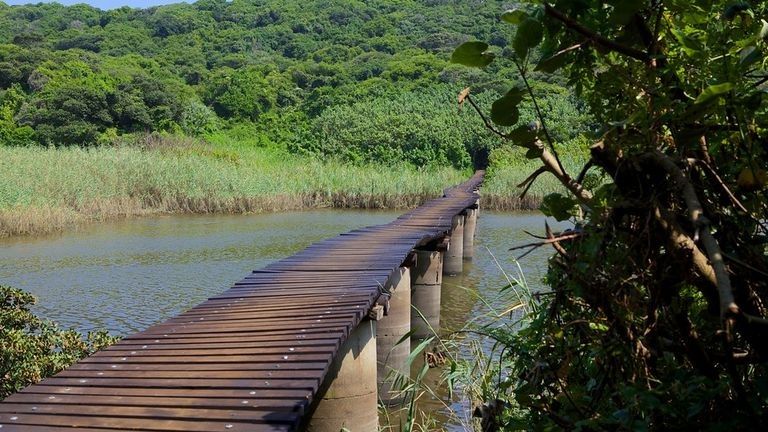
Beachwood Nature Reserve
Beachwood Nature Reserve is 50 ha in extent falling in the Greater Durban Area (Ethikwini Municipality) located on the northern bank of the Umgeni River, between the M 4 highway and the coast.
The reserve is dominated by white and black mangroves and various salt tolerant species of grasses, reeds and rushes. There is a extensive board walk system through the mangroves, which allows for a large number of educational tours and walks.
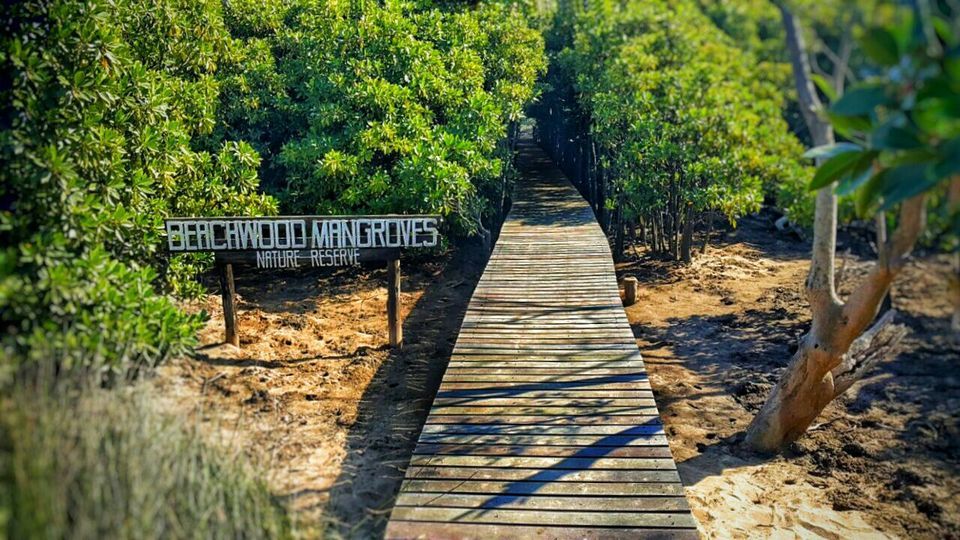
Mpenjati Nature Reserve
Mpenjati is 82 ha in extent, and encompasses the mouth of the Mpenjati River and adjacent north and south banks.
The area is mainly dominated by coastal grassland and wetlands, while the remainder of the area is made up of coastal dune and forest as well as palm veld. The Reserve is one of the few extensive protected wetland areas on the southern coast.
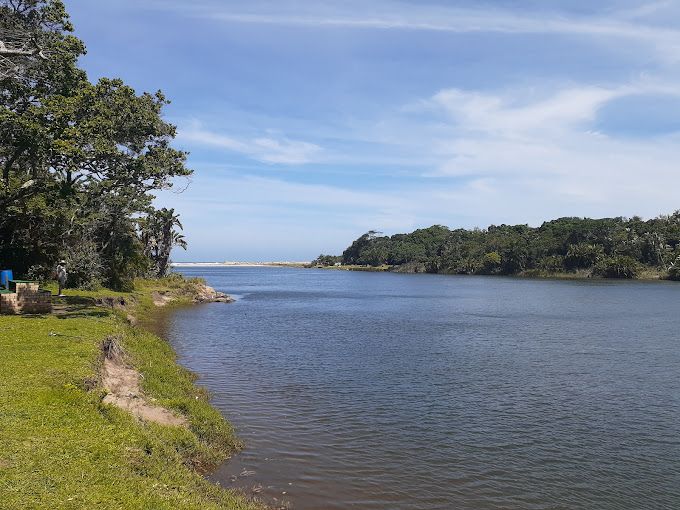
uMlalazi Nature Reserve
uMlalazi is 1200 hectares and mainly dominated by beaches and dunes, which are a major physical feature of the reserve reaching a approximate height of 30m on the shore edge.
Several ecosystem types namely tidal marsh, flood plain, reed, mangrove forest ,acacia thicket and esturine which encompasses the remainder of the reserve, which provides excellent habitat for a diverse range of plant, fish and animal life.
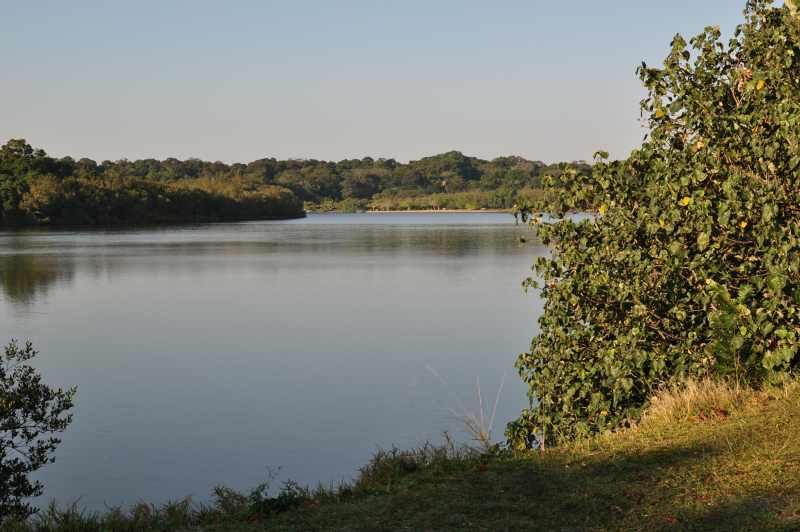
Amatikulu Nature Reserve
Amatikulu Nature Reserve measures 2100.3 ha located on the southern bank of the Amatikulu river. The reserve is bordered by a unbroken strip of sandy beaches and coastal dunes which are transformed into a series of undulating sandy hills as one moves further into the reserve.
The reserve is dominated by grasslands, bush thickets, riverine and swamp forests which supports a diverse mammal, amphibian and reptile population.
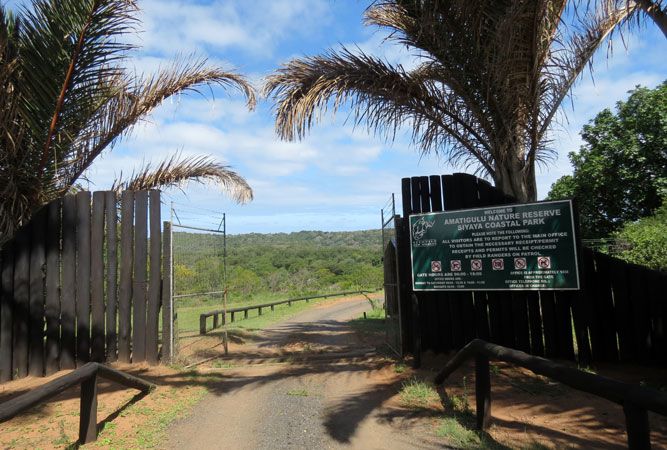
Richards Bay Sanctuary
The Richards Bay Sanctuary developed through the creation of a berm in 1975 to divide the Richards Bay Harbour and protect the natural sanctuary area on the southern side. The sanctuary is 1200 ha in extent and situated on the Mhlatuze river and encoporates the Mhlatuzie estuary which is relatively unspoilt and unpolluted, with area large communities of white, black and red mangroves and swamp forests.
The estuary remains one of the most important estuarine habitats along the Zululand coast. Although not nearly the size of St Lucia to the north, it is no less dynamic or important as a nursery area for fish, crustaceans and other marine/aquatic organisms, with large Zostera beds.
Maphelane Nature Reserve
Maphelane Nature Reserve was proclaimed in 1978 to protect the Coastal and swamp forest from uncontrolled utilization. The reserve is 9600 Ha in extent and lies on the southern bank of the St Lucia Estuary mouth which forms the southern boundary of the Greater St Lucia Wetland Park.
The reserve is boarded on the eastern side by sandy beaches and coastal dunes, the area is dominated by coastal and swamp forests and provides ideal habitat for a large population of red duiker and bushbuck, the beaches between the mouth of the Umfolozi and Cape St Lucia light house are nesting areas for both the logger and leather back turtles.
Marine Living Resources
Marine
The KwaZulu-Natal Nature Conservation Service acts as an agent on behalf of the Department of Environmental Affairs and Tourism, Marine and Coastal Management, to sell marine permits and enforce the law with regard to marine matters in this province.
The Marine Living Resources Act (Act 19 of 1998) was enacted in November 1998. In terms of this act all anglers require a permit to fish, with amongst other methods, a rod and reel. This is a big move away from the previous laws which allowed virtual free access to marine resources. Although the new Act affects millions of anglers along the coast, the reaction to the implementation of an angling fee has been very favourably received. It appears that the adage "user pays" has been accepted and anglers have flocked to "get legal".
Annual permits are available which are valid for a 12 month period from date of purchase. Temporary permits which are valid for a 28 day period from date of purchase are also available.
National Permits
Issued by Post Offices through out the Country & EKZN Wildlife outlets
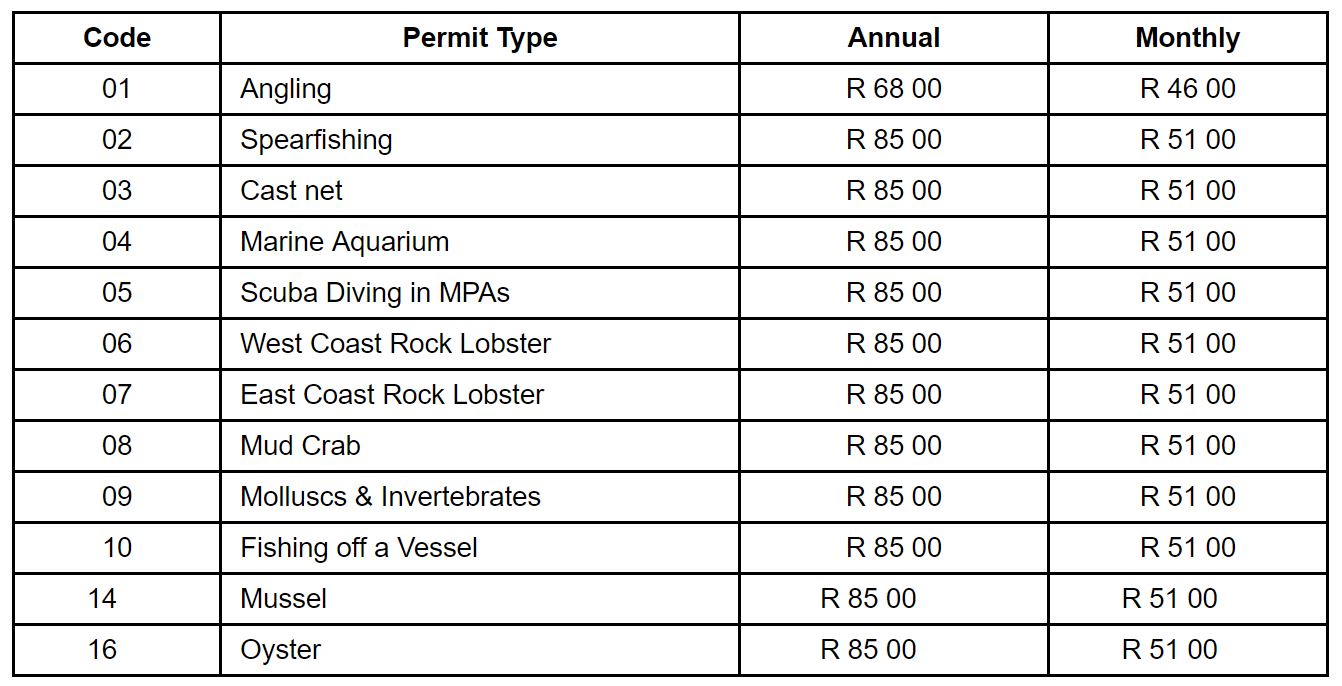
KZN Permits
Issued by EKZN Wildlife permit outlets only

Permit Outlets
Please contact outlets for specific office hours.
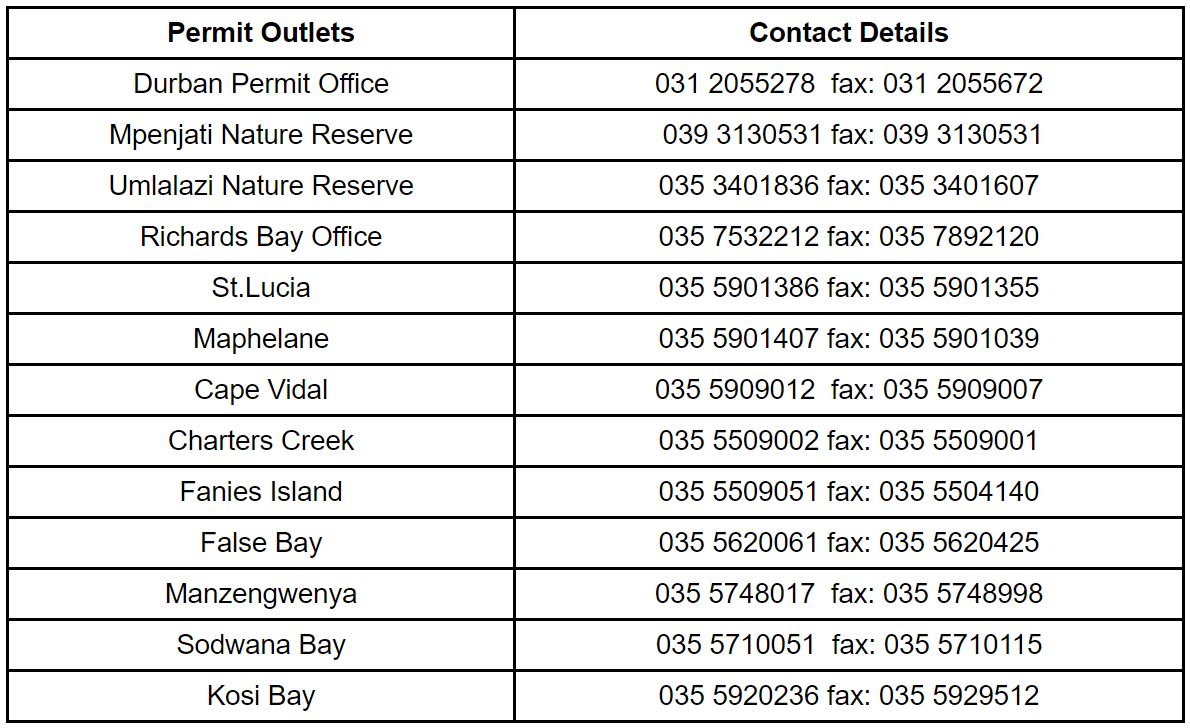
Turtle Monitoring
The 56km stretch of beach, north (up to Kosi mouth) and south (up to Black Rock) of Bhanga Nek, is the official EKZNW turtle monitoring area. The main objective of the programme is to collect nesting and turtle size information that can be used in estimating the turtle population and also the distribution of the nesting sea turtles in South Africa and southern Mozambique.
Two species of turtle are monitored, the loggerhead (Figure 1a) and the leatherback turtle (Figure 1b). The loggerhead turtles’ distinct features include a hooked beak and the carapace plates do not overlap, while the leatherback is blackish in colour with seven longitudinal ridges down its back.
The 2007 / 2008 turtle season got underway with a workshop held at the Bhanga Nek research shack. Every season 16 turtle monitors are appointed and trained before the turtle season begins.
The basic protocol during a patrol by the monitors entails the following: When a turtle is found, its species is identified, the carapace is measured, the flippers are checked for calluses or notches as these would indicate the presence of previous tags or otherwise that she had hatched within the monitoring area during a previous season. The flippers are checked for tags, if no tags are present then two tags are clipped onto her flipper. She is then scanned for a microchip and if present then the microchip number is recorded, otherwise a microchip is inserted.
During the 2006 / 2007 season a total of 2672 loggerhead nests and 353 leatherback nests were recorded. Both these figures were substantially higher than in previous seasons. There were 552 loggerheads tagged during the season and of those 105 had been tagged before. The number of leatherback turtles tagged was 94 with only three being tagged during previous seasons. It is often the case that the monitors will not see the turtle come out of the water and nest but only find the tracks in the sand where the turtle had come up the beach and then returned to the sea. When this occurs the monitors record these as ‘tracks’. This is an indication of the number of turtles that have come ashore and is important to record this information. During the 2006 / 2007 season, 4516 tracks were observed where 91.5% were from loggerheads and 8.5% from leatherbacks. These numbers are higher than previous seasons and Figure 3 indicates the trends in the number of tracks of both loggerhead and leatherback turtles for the duration of the programme from the first season in 1965 and 1966.
Figure 3. Number of loggerhead (CC) and leatherback (DC) tracks recorded for the duration of the programme, since the 1965 / 1966 season. Graph from: 2006/2007 Maputaland sea turtle monitoring seasonal report by J. Papillon, edited by C. Lawrence.
The 2007 / 2008 turtle season is well underway and the turtle monitors have already collected vital data that could add more pieces to the puzzle of the sea turtle populations in South Africa.
Coastal Projects
International Coastal Cleanup
14 years ago the USA based Centre for Marine Conservation initiated the International Coastal Cleanup, it started small and has grown to such an extent that in 2004 there were a 100 countries participating equating to 500 000 volunteers, and combined they removed 8.2 million tones of human generated trash from 35 000 kms of coastline.
Ezemvelo KZN Wildlife joined the International Coastal Cleanup for the first time in 1996. This was regarded as a pilot project, with 460 people removing 9 tones of litter from 33 kms of beach and included 5 divers who collected 7 kgs of litter from our reefs. This programme has grown dramatically from year to year and Ezemvelo KZN Wildlife now cater on an annual basis for 10 000 volunteers
The International Coastal Cleanup has become one of the largest volunteer efforts on behalf of the marine environment in this Province. This year 8 855 dedicated volunteers participated and our marine environment is cleaner by having 26 031 kgs of litter removed from our beaches, reefs, estuaries, streams, rivers and catchments.
Durban Bay Cleanup
This is an annual event that is co ordinated and facilitated by Ezemvelo KZN Wildlife staff and Honorary Officers and is focused on cleaning the Durban Bay as well as raising awareness about the effects of pollution on the marine environment. This year 1776 enthusiastic learners participated from 41 schools in the Greater Durban area and combined they collected 1925 bags of rubbish, which was estimated at 10 tonnes.
Coast Care
This is a two year programme funded by the Department of Environmental Affairs and Tourism. The programme budget is R 14.2 million, which is focused on coastal management, with the majority of the activities being :
- Beach cleaning
- Maintenance
- Alien plant control and monitoring.
This project is part of the “National Alternative Livelihoods” programme and provides employment for over 551 community members during the year, in the area between Mozambique in the north, to Ballito in the south. One of the main priorities of this programme is to provide capacity building so that permanent employment can be obtained in the future. ( Pictures needed )
Maputuland Turtle Monitoring
The World Wildlife Green Trust Fund provides a budget of R 187 000 which enables Ezemvelo KZN Wildlife to monitor and record nesting populations of loggerhead and leatherback sea turtles along the 56 kilometers of beach, north and south of Bhanga Nek. 16 local community members have been trained as monitors and are employed over the nesting period (October – March) to gather this valuable data. Over the 2006/2007 monitoring period 2672 loggerhead and 353 leatherback turtles were recorded as having nested.
Honorary Officers
Ezemvelo KZN Wildlife’s marine division has a dedicated and highly trained group of 283 honorary officers (Volunteers) comprising 14 committees, that are stationed along our 620Km’s of coastline. Our Honorary Officers supplement and support KZN Wildlife staff in carrying out their management goals and objectives and play a vital role in developing and implementing awareness programmes, aimed at promoting an understanding of the marine environment.
Honorary Officer Projects 2006/2007
- Fishcare Awareness Programme (Distribution of awareness materials)
- Attending shows & Expos
- Adopt a Beach
- Beachwood Mangroves Open Day
- Marine Permit Audit
- International Beach Cleanup
- Educational Presentations & field visits
- Alien plant eradication
- Game counts
Honorary Officer Youth Development Programme
The youth development programme was initiated in 2004 in the Greater St Lucia Wetland Park and was aimed at exposing the youth of the surrounding communities to the marine environment. Through a structured mentorship programme linked to the St Lucia Honorary officer groups, the children were exposed to basic marine protected area management, marine ecology, awareness and monitoring programmes.
This programme is run entirely through sponsorship and at present R 200 000 has been raised which provides T shirts, transport and catering costs for the youth participating in these programmes. The response from the children has been excellent and at present approximately 85 youth are actively involved.
This programme is now being implemented by the Durban and Ballito staff and honorary officer groups and the aim is for the remainder of the 14 honorary officer committees along our 620Km’s of coastline to all have youth development programmes in place.
It is through this programme that the coastal section hopes to:
- Actively introduce youth to the marine environment through practical hands on awareness programmes.
- To encourage youth to become marine conservation ambassadors within their communities.
- To develop a strong pool of marine conservationists who have a sound knowledge and interest in marine biodiversity management. Who could be recruited into the honorary officer movement and or consider career options within this field.
- To act as facilitators and coordinators in seeking sponsorship and or funding for youth to study in the field of conservation or natural science fields.
Subsistence Fisheries Management & Implementation
The Subsistence Fisheries Programme is being managed and implemented on a National basis by Marine and Coastal Management (MCM) and funded by the Norwegien Government. This programme is managed through a dedicated Subsistence Fisheries Management Unit (SFMU), which controls issues of a National concern and supports and co ordinates the activities of Provincial and Local structures.
Within Kwa Zulu Natal the implementation and management of the Subsistence Fisheries Programme has been devolved to Ezemvelo KZN Wildlife who work very closely with and are supported by the National Subsistence Fisheries Management Unit.
Management In Kwa Zulu Natal
Ezemvelo KZN Wildlife formed a Subsistence Fisheries Unit in 2001 To implement the Subsistence Fisheries Programme within Kwa Zulu Natal. This is a dedicated full time unit based at Ezemvelo KZN Wildlife’s regional offices in Durban, comprising: 1 x manager; 1 x administration coordinator; 1 x data capture clerk and 4 x field extension officers.
Date Achievements To
- Development of a multi-tiered management structure for subsistence fisheries in KZN.
- A provincial Subsistence Fisheries Management Committee chaired by a senior EKZNW official and on which the national agency MCM is represented. This acts to steer and manage the process in KZN and guides the activities of the SFIU. It has regional representation from EKZNW.
- The development of a KZN Subsistence Fisheries Management Implementation Plan. This details actions, management decisions, roles and role-players for the establishment of local co-management structures
- Communication and consultation with all subsistence fishing communities to inform fishers of the new legislation and initiate the process of involving fishers in co-management.
- Identification of communities with subsistence and small-scale commercial fishers, using the SFTG definitions. There are 19 qualifying communities along the KZN coast.
- A total of 43 Local Subsistence Co-management Committees (LSCC’s) have now been established for the different resource user groups in the majority of these fishing communities.
- Training of management staff, extension staff, community monitors, and LSCC’s. This covered co-management principles, legislative frameworks, sustainable fisheries and facilitation skills, as appropriate for the different role-players.
- Fishery Management Plans have been completed and approved by Marine & Coastal Management for 5 subsistence and 2 small-scale fisheries. Draft Plans have been prepared for the remaining 2 fisheries.
- Establishment of a Subsistence Fisheries Monitoring Programme. Community monitors have been trained to record off-take and utilisation patterns, and assist with stock surveys. Presently there are 38 community monitors and 4 supervisors employed.
- An integrated database has been designed for the capture of the catch data being collected by the monitors. A Data Technician has been employed to capture and assist in basic analysis of data collected from the community monitors and stock surveys. The Data Technician has undergone computer training.
- The permit application process has been developed and implemented in 10 of the subsistence fisheries so far.
Ezemvelo KZN Wildlife’s Dive Team
The marine division has formed a dedicated and highly trained dive team, comprising 12 commercial class 3 & 4 divers and 3 zulu speaking tranees divers. These staff members are stationed along our 620Km’s of coastline and over and above their normal management functions, they play a vital role in the offshore compliance, awareness and monitoring programmes within and outside our marine protected areas, these being:
- Enforcement of the Marine Living Resources Act.
- Promtion of voluntary compliance and awareness in the diving industry.
- Monitoring and data collection.
Coastal Compliance
Compliance
The KwaZulu-Natal Nature Conservation Service (Ezemvelo KZN Wildlife, EKZNW) has been undertaking the functions of the marine compliance, awareness and liaison since the nationalising of the management of marine living resources in South Africa, by the introduction of the Marine Living Resources Act in September 1998.
Through a contractual agreement between KZN Wildlife and Marine & Coastal Management, these functions are undertaken on an annual basis, and involves performing the following functions:
Marine Compliance by implementing the Marine Living Resources Act (MLRA)
Marine Awareness by providing information to users on management of the countries marine resources and the laws to ensure sustainable use.
Liaison, with various sectors, to ensure co-management structures are in place to facilitate management of the marine resources.
Administering all the functions to ensure they are done within the legal and policy framework set by Department Of Environmental Affairs and Tourism (DEAT) and also to ensure that proper procedures are adhered to.
Monitoring the management effort being applied and the collecting of selective catch and effort data from fisheries in KwaZulu-Natal.
Patrols and Inspections
Ezemvelo KZN Wildlife undertakes beach, inshore and offshore patrols to enforce the Marine Living Resources Act and its regulations. Staff carryout inspections of individual fishers and vessels, to ensure general adherence to regulations and permit requirements. The majority of patrols are undertaken in a visual manner to create a presence so that fishers are aware that compliance staff are present to undertake inspections and that there is a state of control and intent to enforce the fisheries regulations.
Table 1 Inspections whilst on shore patrol:
